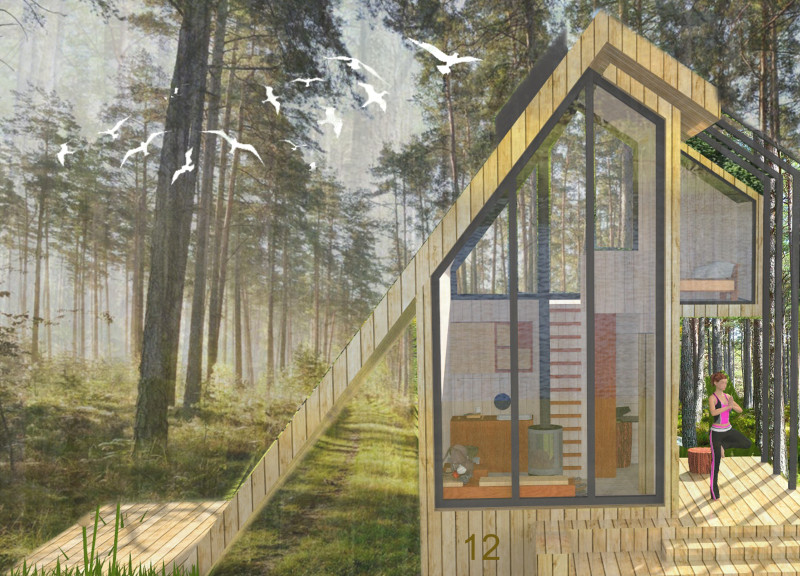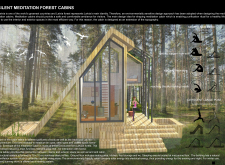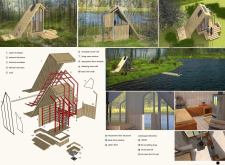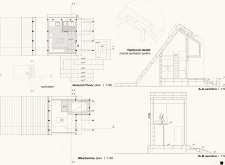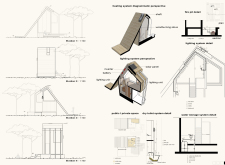5 key facts about this project
The Silent Meditation Forest Cabins are found in Latvia, a country known for its lush greenery and expansive forests. Designed for meditation and reflection, these cabins embrace a concept that values the connection between people and nature. The architecture allows visitors to enjoy the tranquility of the outdoors while providing practical spaces for rest and contemplation.
Architectural Concept
The design positions the cabins as part of the surrounding landscape. Their shapes reflect different postures of the human body, symbolizing both movement and stillness. This approach is in harmony with traditional Latvian architecture, creating a variety of spaces that are open, semi-open, and closed. Each area is intended for different activities, accommodating both communal gatherings and solitary moments.
Materials and Structure
Timber from the Latvian forest forms the main envelope of the cabins, establishing a link to local resources while serving multiple purposes. This wood acts as a protective roof and a surface for yoga practice, encouraging interaction with the natural environment. The use of stainless steel profiles for the structure adds strength and durability, ensuring that the cabins can withstand the elements over time.
Interior Layout
The ground floor is thoughtfully arranged with a seating area, kitchen, food storage, and a bathroom. This layout supports day-to-day activities while keeping the focus on meditation. A mezzanine sleeping area offers a cozy retreat above, allowing occupants to connect with the landscape from an elevated perspective.
Sustainability Features
Natural ventilation is a key aspect of the design, providing comfort while helping to keep insects at bay. Solar energy is harnessed for electricity, reinforcing a commitment to eco-friendly practices. In winter, each cabin includes a wood-burning stove, which offers warmth and enhances the living experience in colder months.
The cabins feature openings that draw the forest inside, enhancing the connection between the interior and the surrounding landscape. Each detail contributes to an environment that encourages mindfulness and a deep appreciation for nature.


